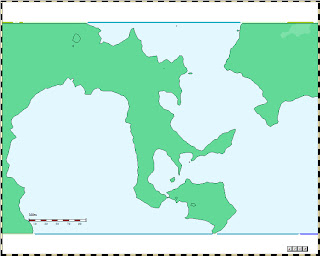The
Jaeroan Peninsula is a peninsula in
_____. It extends eastwards then south from continental ____ into the _______ Ocean and is surrounded by the ___ Sea on the east, the ______ Sea to the south, and the ________ Sea to the west, the ______ Strait connecting the first two bodies of water.
The northern boundaries for the Korean Peninsula are commonly (and tacitly) taken to coincide with her neighbor, _____ . These borders are formed naturally by the rivers
____ and _____. Taking this definition, the
Jaeroan Peninsula (including its islands) has an area of 320,437 km
2.
Physical geography
Mountains cover 70 percent of the Jaeroan Peninsula and arable plains are generally small and far in between the successive mountain ranges. The peninsula becomes more mountainous towards the north and the west, with the highest mountains found in the north ______ Mountain Range and in the west on the border with ____.
Climate
The climate of the Jaeroan Peninsula experiences a relatively warm and wet climate, affected by warm ocean waters.
The entire peninsula is affected by similar the frequent incidence of typhoons in autumn. The majority of rainfall takes place during the summer months. Winters are cold, with January temperatures typically below freezing. Winter precipitation is minimal, with little snow accumulation outside of mountainous areas.
Biology
Surveys of Jaeroan flora have identified more than 3,000 species on the peninsula, of which more than 500 are endemic. The peninsula's floristic provinces are commonly divided between warm-temperate. It is largely typified by broad-leaved evergreens.
The temperate zone covers the great majority of the peninsula, away from the southern coast and high mountains. It is dominated by the Jaeroan pine and various broad-leaved deciduous trees.
Geology
The terrain of the
Jaeroan Peninsula is rumpled, covered with low mountains. There are no active volcanoes on the peninsula. However, _____ Mountain and
_____ have crater lakes, indicating that they were active not long ago. Furthermore, hot springs indicative of low-level volcanic activity are widespread throughout the peninsula. Roughly two earthquakes are recorded per year, but few have any major impact.
